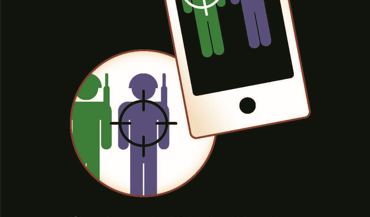
Palestinians are faking their injuries. The October 7th attack was an “inside job.” Ukraine is full of secret Western chemical weapons labs. Misinformation narratives in situations of war and conflict continue to pile up around the world. When and where do these kinds of narratives spread, and what explains the extent to which people accept or reject them? These questions are important because mis- and disinformation in armed conflicts can be quite harmful, working to generate and escalate wartime violence, conceal and perpetuate terrible atrocities, and harden people’s attitudes and forestall the possibility of peace.
In my book Seeing is Disbelieving: Why People Believe Misinformation in War, and When They Know Better, I take on this under-examined phenomenon. In doing so, I force a conversation between scholarship on public belief in misinformation and scholarship on the dynamics of violent conflict – which have both thrived in recent years but largely proceeded along separate tracks. This is surprising given that war is one of the main arenas for misinformation today, and misinformation one of the primary battlefronts in war.
The book’s argument is a simple one: that the accuracy of people’s factual beliefs and their vulnerability to misinformation in war depends on their proximity and exposure to relevant events. War is rife with lies, many of which are believed as people indulge in both partisan media coverage and their own preexisting biases in conflicts. Yet, while misinformation is widespread in war, those more directly exposed to the relevant events can often see through it – owing to their superior local information and their stronger incentives to know what is happening around them. This produces two types of people in war: those removed from the fighting – who are susceptible to manipulation about what is happening – and those on or near the front lines, who tend to know better.
The book supports this argument with a rich array of evidence. First, it focuses on the U.S. drone strikes in the tribal areas of Pakistan, weaving together a range of quantitative and qualitative evidence to provide a rounded case study of Pakistani factual perceptions and misperceptions about drones. In particular, it demonstrates how the widespread factual misperceptions about the strikes overwhelmingly killing civilians that pervade Pakistan – which it links to some very real political consequences – are largely not shared by those who live within the targeted areas. Second, it shifts to the U.S.-led anti-ISIS air campaign in Iraq, using a combination of fresh survey and event data to reveal a similar gap in susceptibility to falsehoods among those who are more or less removed from the bombing. And third, it mines a cache of rich qualitative interviews conducted with Syrian refugees in Turkey about their conflict attitudes and experiences to show that those who saw more of the war are better positioned to tell which rumors are true and false and more confident in their ability to do so. These analyses are supported by a broad survey of the anecdotal empirical record of conflict, with similar dynamics apparent in cases ranging from World War II to the Arab-Israeli conflict to the American civil war. The overall picture is clear: people close to the action generally “get it right,” while those living elsewhere in the conflict setting are susceptible to misinformation and fake news due to political and informational biases about what is going on.
Ultimately, the book illuminates where wartime misinformation finds the most fertile soil while also pointing toward ways to limit and constrain it. Indeed, on one hand, this research shows how it is communities that are aggrieved about but removed from what is going on in war that tend to be the most vulnerable to lies about it. On the other hand, it highlights the remarkable civilians on the front lines of wars who tend to know what is going on around them well and can’t be easily deluded about it. Amplifying their voices relative to those far away in conflict is likely to promote a more favorable balance of truth to lies in war, and the conclusion discusses some novel ways this could be done online and offline. The book also extracts lessons for our understanding of political behavior and psychology more broadly. Notably, the ways in which people with “skin in the game” and more direct exposure to high-stakes events in war tend to resist lies about them has potentially important implications more generally, and the book explores how these findings can enhance our wider knowledge of the limits of false beliefs. In this way, Seeing is Disbelieving aims to stimulate discussion, thinking, and research among both those who are interested in modern war and conflict and those who are interested in misinformation – and even human (mis)perception – more broadly.
Dr. Daniel Silverman is the author of Seeing is Disbelieving: Why People Believe Misinformation in War, and When They Know Better.
Latest Comments
Have your say!